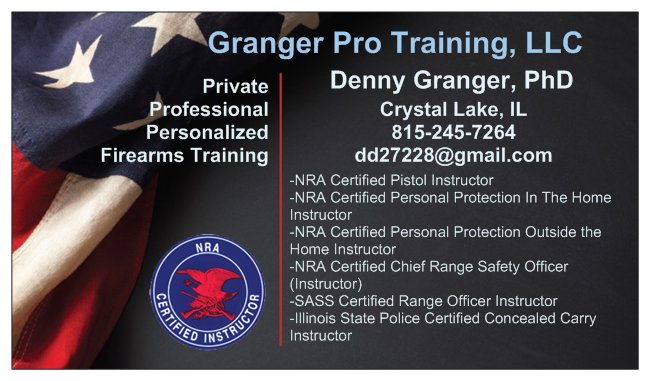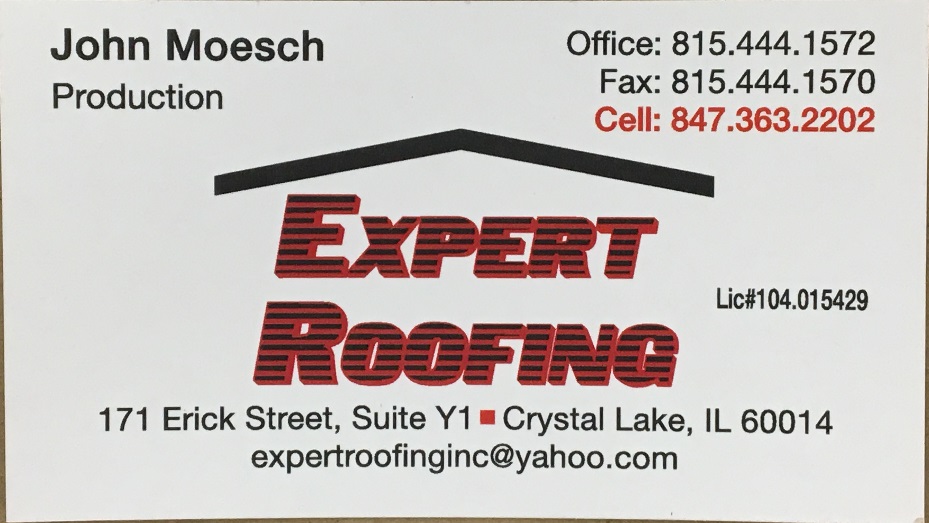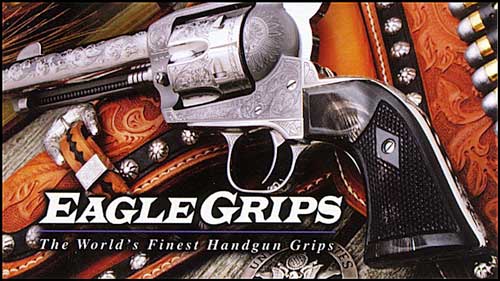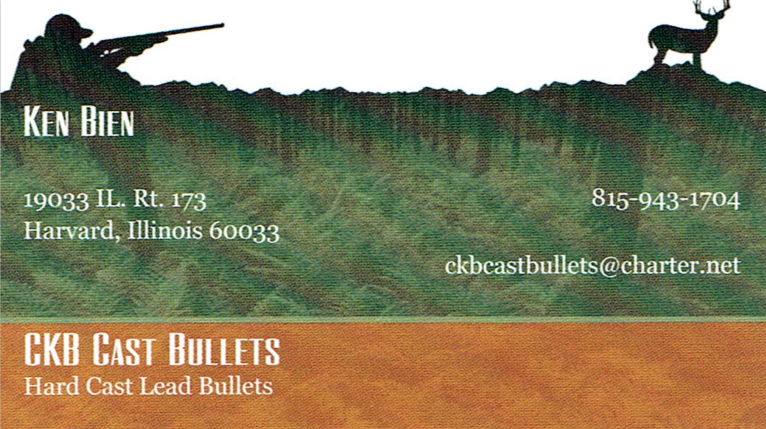Howdy, Stranger!
It looks like you're new here. If you want to get involved, click one of these buttons!
Quick Links


Check out the GGP Sponsors!








Categories


Check out the GGP Sponsors!








In this Discussion
It's SHOOTEN' Time!!
2025 Match Dates
2nd Saturday 4th Sunday
Apr 27
May 10 May 26
June 14 June 22
July 12 July 27
G.A.F matches
Sat May 31 Sunday June29
Registration 8 A.M. Safety meeting 8:45
How to Get to the Dry Gulch Ranch Cowboy Range
Hope to see you there!!
2025 Match Dates
2nd Saturday 4th Sunday
Apr 27
May 10 May 26
June 14 June 22
July 12 July 27
G.A.F matches
Sat May 31 Sunday June29
Registration 8 A.M. Safety meeting 8:45
How to Get to the Dry Gulch Ranch Cowboy Range
Hope to see you there!!
6th Edition
 dd
Gnome, gnome on the range!
dd
Gnome, gnome on the range!
<div class="IPBDescription">by Devereaux</div>
<br />
<br />
Congratulations!<br />
<br />
The last match was held under rather extreme conditions. We haven’t seen that kind of heat in years. And, of course, we are all now well conditioned to air conditioning, so we have little practical exposure (at least most of us) to the extremes of heat (or cold). Our tolerance of these will, therefore, be less. On top of that, none of us except perhaps the kids is exactly in good physical shape, and the Marine Corps learned long ago that temperature tolerance was a function of how physically fit you were (hence the push for fitness in the Corps).<br />
<br />
Still, everyone paid attention. There was plenty of water and electrolyte consumed, people didn’t run around in the heat, and overall there seemed a real sense of taking precautions. There was even watching out for others.<br />
<br />
Sunday was a bit easier, with the addition of a little wind. Still, the heat was over 90 degrees, and that’s hot in anyone’s book. So congratulations on a job well done. I note that there weren’t reports of any heat-related casualties from Hell (Sparta), so I guess the lessons carried forth.<br />
<br />
<br />
Glasses<br />
<br />
“Eyes & Ears” is common at just about any shooting sport around, from Cowboy to IPSC or High Power Rifle, or what have you. But have you ever looked at the why.<br />
<br />
Our eyes are highly complex organs that give us the ability to see around us. Without them we couldn’t shoot (ain’t no blind cowboy shooting allowed!). Eyes each see an image, and because the eyes are not co-located centrally but are split on either side of center, the brain actually sees slightly different images from each eye (Try it! Close one eye and look at something, particularly nearby. Then look at it with the other eye.) The brain then correlates the differences to give you a sense of “depth of field” or distance, primarily for short distances. (Long distance is “measured” through things like parallax and foreshortening.) It is why one-eyed people have difficulty with things like parking or finding the beginning or end of a staircase. They see it, but their ability to judge how far away it is is impaired. <br />
<br />
In the “period” that we “model” (the later 19th century), there were glasses. Mostly these were city things, and mostly they were reading glasses, although there definitely were a few city dwellers who wore glasses regularly. Unfortunately “period” glasses just don’t give the right protection, so we are forced to wear modern stuff to keep our eyes protected. We are in need of good coverage in front, and now we will also be in need of side coverage.<br />
<br />
Ideally a shooting glass would be a polycarbonate lens that wraps around the front to the side all the way to the temple. This is because entry of foreign objects is completely possible from the side, between the back of the tradition lens and the eye. When that happens, the object often hits the back of the traditional glasses’ lens and ricochets into the eye, damaging the cornea. Since 45% of your ability to see items comes from the cornea, damage to this structure is serious stuff! The most likely object we face in this arena is splattered lead, but a case ejected from a rifle is also a possible dadburn culprit! See how you’d like a hot case bouncing around between your glass and eye. In other forms of shooting sports, ejected cases from autoloaders can do the same, most notably pistols. <br />
<br />
Polycarbonate is the preferred lens material because it is light, giving the least weight penalty, while being excellent resistance to scratching and marring from flying objects. One other characteristic of polycarbonate lenses is that they are generally UV blockers. Even the clear lenses of most shooting poly glasses are UV protective. This is one of those cumulative issues, wherein the overall exposure causes problems over time rather than any one exposure being a problem. Rather like the hearing issue, where damage is a cumulative exposure thing. (Don’t want to hear no commentary from the wives on this one!)<br />
<br />
This wrap around issue is a big one in SASS. Next year it is going to be a mandatory item on SASS matches that all shooters wear wrap around protection. If you currently own a traditional pair of shooting glasses, there are little add-on pieces that you can buy to give you the side protection. We sell the OSHA approved versions at the trailer for about $5, and they come in large and small, with a left and right segment. The cheaper version we have been giving away for free this year, but come next year we will charge for these, as they are not free to us.<br />
<br />
<br />
Speed Stage<br />
<br />
The Speed Stage has been around, pretty much unchanged, for a long time. It was a nifty thought back when it was first conceived – a chance to blast away as fast as you can with not much regard or worry about hitting the target (well, at least just a LITTLE regard). It’s been said that it’s time has come, so in the interest of providing a little variety, it has been modified a bit. True to form, there are complaints. Those that found they weren’t the fastest were previously ticked because it allowed the fast burners to show off a little. Now the fast burners can’t do that as well, so they are upset. Cheese, guys! It’s only a game! Have some fun, enjoy the shooting and the camaraderie, and roll with the flow! <br />
<br />
<br />
.38 Special vs. .357 Magnum<br />
<br />
Most people consider these two calibers rather interchangeable. That is, if you have a .357 mag, you can readily shoot a .38 spl without any losses. Well, sort of.<br />
<br />
This particular calibre is interesting because of the cluster of commercial cartridges in the same area. 9mm is .355”, .38 Super is .356”, and .38 Long Colt and Special and .357 Mag are .357”. Some of the older calibers like .38-55 may or may not have been .379. Those barrels tended to show more variation in diameter than modern standards. We might get more insight into some of those older calibers from one of the old hands that shoot those calibers at a later date.<br />
<br />
For the moment, the discussion is the difference between .38 Special and .357 Magnum. First, a little basic data. The .38 Special case is 1.1550”, while the .357 Magnum case is 1.29000”. The standard .38 Special is a 158 gr bullet running about 850 fps. In the +P version, the velocity jumps to about 950-1000 fps. The .357 Magnum, on the other hand, in the relatively standard 158 gr bullet, has a velocity in the 1400-1500 fps range. Therein lies the potential issue. Excluding the obvious jump that the .38 Special has to make from case to barrel mouth (0.1350” + cylinder to barrel clearance of probably 0.004”), the velocity spread is huge. The .357 Magnum travels just about double the speed of the .38 Special.<br />
<br />
Now you rifle shooters out there are probably quite aware of the issue of optimum twist rate for bullet weight and speed. It has most apparently shown up in the Service Rifle competition, where the venerable M1 & M14 were generally spanking the AR shooters because the standard 62 gr .223 can’t hold the 500 yard line. Along comes the 79 gr bullet with outstanding BC, and voila! You have a competitive AR. BUT that AR has a barrel twist of 1-in-7, as opposed to the usual AR of 1-in-9 or 10. Try shooting the heavy bullets out of the slower barrels and you get garbage; likewise vice versa – the target barrel will not shoot 62 gr bullets well. Well, the .357 Magnum also has a twist rate optimized for its speed. That rate is not well liked by .38 Special. This may not be as obvious in the pistol, where the target in CAS is so close that you don’t get much chance to see the inherent accuracy of the weapon, but in the rifle it starts to make a difference. The distance is longer, and the effect becomes easier to see. Another frequent result of .357 barrels shooting the .38 Special is increased leading. Can’t speak to why, but it seems to happen.<br />
<br />
One solution would be to load to .357 specs, but that isn’t allowed by CAS, because such a bullet would play havoc with the targets. Let’s face it – a regular .357 Magnum can usually pierce a car door. It will definitely have an effect on the steel we use. Another solution would be to use .357 cases but download them to the 800fps range that CAS likes. That certainly makes them friendly to the steel, and solves the jump problem from case to barrel. On the other hand, it does nothing about the twist.<br />
<br />
The best answer would be to use real .38 Special guns. Not just the pistols but the rifle especially. Now you would have the correct calibre chamber and twist for what you are shooting. <br />
<br />
One interesting little observation is that not all lever rifles chambered for .357 will load the .38 Special well. There is, of course, a question of bullet type, but the problem ends up being that the shorter .38 special allows the next round to come down onto the beginning of the lifter, thus blocking the part from raising up and bringing the round to the chamber. This seems to be a specific weapon issue, not a model question, but if you look on the SASS wire, you will find numerous references to people that couldn’t use the .38 Special in their rifles. Same issue for the even shorter .38 Long Colt.<br />
<br />
<br />
And Lastly….<br />
<br />
No, there are absolutely no plans to install a saddle of any kind whatsoever in the “house beside the house”.<br />
<br />
[Hmm... What are we going to do with the saddle now? dd]
The Good Guys Gazette<br />
“Very Little That’s Fit to Print”<br />
Version 1, Series 1, Number 6
<br />“Very Little That’s Fit to Print”<br />
Version 1, Series 1, Number 6
<br />
<br />
Congratulations!<br />
<br />
The last match was held under rather extreme conditions. We haven’t seen that kind of heat in years. And, of course, we are all now well conditioned to air conditioning, so we have little practical exposure (at least most of us) to the extremes of heat (or cold). Our tolerance of these will, therefore, be less. On top of that, none of us except perhaps the kids is exactly in good physical shape, and the Marine Corps learned long ago that temperature tolerance was a function of how physically fit you were (hence the push for fitness in the Corps).<br />
<br />
Still, everyone paid attention. There was plenty of water and electrolyte consumed, people didn’t run around in the heat, and overall there seemed a real sense of taking precautions. There was even watching out for others.<br />
<br />
Sunday was a bit easier, with the addition of a little wind. Still, the heat was over 90 degrees, and that’s hot in anyone’s book. So congratulations on a job well done. I note that there weren’t reports of any heat-related casualties from Hell (Sparta), so I guess the lessons carried forth.<br />
<br />
<br />
Glasses<br />
<br />
“Eyes & Ears” is common at just about any shooting sport around, from Cowboy to IPSC or High Power Rifle, or what have you. But have you ever looked at the why.<br />
<br />
Our eyes are highly complex organs that give us the ability to see around us. Without them we couldn’t shoot (ain’t no blind cowboy shooting allowed!). Eyes each see an image, and because the eyes are not co-located centrally but are split on either side of center, the brain actually sees slightly different images from each eye (Try it! Close one eye and look at something, particularly nearby. Then look at it with the other eye.) The brain then correlates the differences to give you a sense of “depth of field” or distance, primarily for short distances. (Long distance is “measured” through things like parallax and foreshortening.) It is why one-eyed people have difficulty with things like parking or finding the beginning or end of a staircase. They see it, but their ability to judge how far away it is is impaired. <br />
<br />
In the “period” that we “model” (the later 19th century), there were glasses. Mostly these were city things, and mostly they were reading glasses, although there definitely were a few city dwellers who wore glasses regularly. Unfortunately “period” glasses just don’t give the right protection, so we are forced to wear modern stuff to keep our eyes protected. We are in need of good coverage in front, and now we will also be in need of side coverage.<br />
<br />
Ideally a shooting glass would be a polycarbonate lens that wraps around the front to the side all the way to the temple. This is because entry of foreign objects is completely possible from the side, between the back of the tradition lens and the eye. When that happens, the object often hits the back of the traditional glasses’ lens and ricochets into the eye, damaging the cornea. Since 45% of your ability to see items comes from the cornea, damage to this structure is serious stuff! The most likely object we face in this arena is splattered lead, but a case ejected from a rifle is also a possible dadburn culprit! See how you’d like a hot case bouncing around between your glass and eye. In other forms of shooting sports, ejected cases from autoloaders can do the same, most notably pistols. <br />
<br />
Polycarbonate is the preferred lens material because it is light, giving the least weight penalty, while being excellent resistance to scratching and marring from flying objects. One other characteristic of polycarbonate lenses is that they are generally UV blockers. Even the clear lenses of most shooting poly glasses are UV protective. This is one of those cumulative issues, wherein the overall exposure causes problems over time rather than any one exposure being a problem. Rather like the hearing issue, where damage is a cumulative exposure thing. (Don’t want to hear no commentary from the wives on this one!)<br />
<br />
This wrap around issue is a big one in SASS. Next year it is going to be a mandatory item on SASS matches that all shooters wear wrap around protection. If you currently own a traditional pair of shooting glasses, there are little add-on pieces that you can buy to give you the side protection. We sell the OSHA approved versions at the trailer for about $5, and they come in large and small, with a left and right segment. The cheaper version we have been giving away for free this year, but come next year we will charge for these, as they are not free to us.<br />
<br />
<br />
Speed Stage<br />
<br />
The Speed Stage has been around, pretty much unchanged, for a long time. It was a nifty thought back when it was first conceived – a chance to blast away as fast as you can with not much regard or worry about hitting the target (well, at least just a LITTLE regard). It’s been said that it’s time has come, so in the interest of providing a little variety, it has been modified a bit. True to form, there are complaints. Those that found they weren’t the fastest were previously ticked because it allowed the fast burners to show off a little. Now the fast burners can’t do that as well, so they are upset. Cheese, guys! It’s only a game! Have some fun, enjoy the shooting and the camaraderie, and roll with the flow! <br />
<br />
<br />
.38 Special vs. .357 Magnum<br />
<br />
Most people consider these two calibers rather interchangeable. That is, if you have a .357 mag, you can readily shoot a .38 spl without any losses. Well, sort of.<br />
<br />
This particular calibre is interesting because of the cluster of commercial cartridges in the same area. 9mm is .355”, .38 Super is .356”, and .38 Long Colt and Special and .357 Mag are .357”. Some of the older calibers like .38-55 may or may not have been .379. Those barrels tended to show more variation in diameter than modern standards. We might get more insight into some of those older calibers from one of the old hands that shoot those calibers at a later date.<br />
<br />
For the moment, the discussion is the difference between .38 Special and .357 Magnum. First, a little basic data. The .38 Special case is 1.1550”, while the .357 Magnum case is 1.29000”. The standard .38 Special is a 158 gr bullet running about 850 fps. In the +P version, the velocity jumps to about 950-1000 fps. The .357 Magnum, on the other hand, in the relatively standard 158 gr bullet, has a velocity in the 1400-1500 fps range. Therein lies the potential issue. Excluding the obvious jump that the .38 Special has to make from case to barrel mouth (0.1350” + cylinder to barrel clearance of probably 0.004”), the velocity spread is huge. The .357 Magnum travels just about double the speed of the .38 Special.<br />
<br />
Now you rifle shooters out there are probably quite aware of the issue of optimum twist rate for bullet weight and speed. It has most apparently shown up in the Service Rifle competition, where the venerable M1 & M14 were generally spanking the AR shooters because the standard 62 gr .223 can’t hold the 500 yard line. Along comes the 79 gr bullet with outstanding BC, and voila! You have a competitive AR. BUT that AR has a barrel twist of 1-in-7, as opposed to the usual AR of 1-in-9 or 10. Try shooting the heavy bullets out of the slower barrels and you get garbage; likewise vice versa – the target barrel will not shoot 62 gr bullets well. Well, the .357 Magnum also has a twist rate optimized for its speed. That rate is not well liked by .38 Special. This may not be as obvious in the pistol, where the target in CAS is so close that you don’t get much chance to see the inherent accuracy of the weapon, but in the rifle it starts to make a difference. The distance is longer, and the effect becomes easier to see. Another frequent result of .357 barrels shooting the .38 Special is increased leading. Can’t speak to why, but it seems to happen.<br />
<br />
One solution would be to load to .357 specs, but that isn’t allowed by CAS, because such a bullet would play havoc with the targets. Let’s face it – a regular .357 Magnum can usually pierce a car door. It will definitely have an effect on the steel we use. Another solution would be to use .357 cases but download them to the 800fps range that CAS likes. That certainly makes them friendly to the steel, and solves the jump problem from case to barrel. On the other hand, it does nothing about the twist.<br />
<br />
The best answer would be to use real .38 Special guns. Not just the pistols but the rifle especially. Now you would have the correct calibre chamber and twist for what you are shooting. <br />
<br />
One interesting little observation is that not all lever rifles chambered for .357 will load the .38 Special well. There is, of course, a question of bullet type, but the problem ends up being that the shorter .38 special allows the next round to come down onto the beginning of the lifter, thus blocking the part from raising up and bringing the round to the chamber. This seems to be a specific weapon issue, not a model question, but if you look on the SASS wire, you will find numerous references to people that couldn’t use the .38 Special in their rifles. Same issue for the even shorter .38 Long Colt.<br />
<br />
<br />
And Lastly….<br />
<br />
No, there are absolutely no plans to install a saddle of any kind whatsoever in the “house beside the house”.<br />
<br />
[Hmm... What are we going to do with the saddle now? dd]









Comments